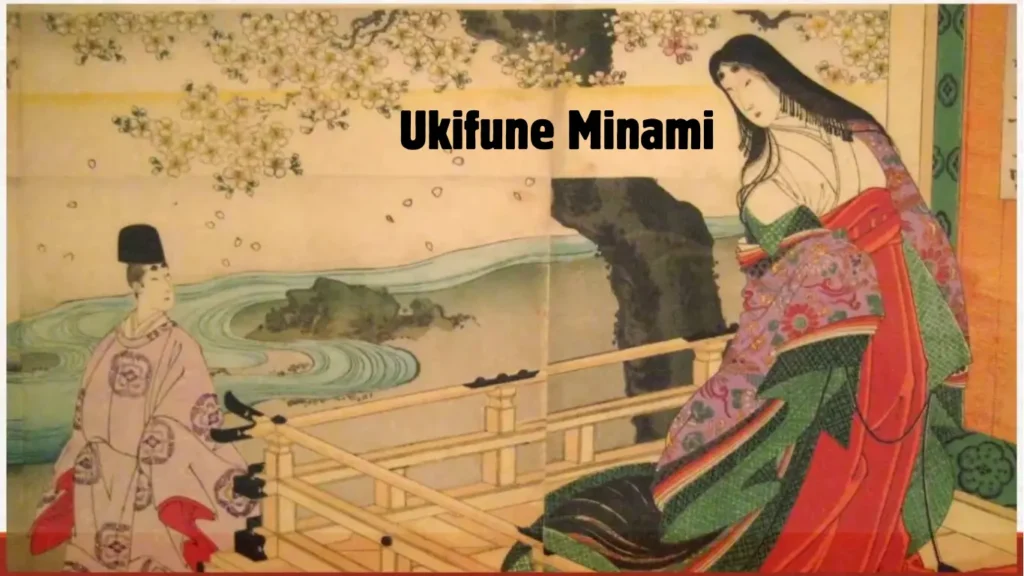The name Ukifune Minami resonates deeply with those fascinated by the intersection of Japanese culture, literature, and history. A symbol of artistry and tradition, it offers a profound journey into the heart of Japan’s cultural heritage.
This article delves into the essence of Ukifune Minami, unraveling its connections to history, art, and the modern world while ensuring that every question you have is answered with clarity and depth.
The Legacy of Ukifune in Japanese Literature
The term “Ukifune” finds its roots in The Tale of Genji, one of Japan’s most celebrated literary works. This epic tale, penned by Murasaki Shikibu, introduces Ukifune as a character torn by love and societal expectations.
Her story embodies emotional depth and human vulnerability, themes that have inspired countless interpretations over centuries.
In Japanese culture, Ukifune symbolizes the ephemeral nature of life. The poetic essence of her narrative intertwines with the idea of floating—adrift yet profoundly connected to the currents of human emotion.
The addition of Minami extends this concept, bringing new dimensions to its meaning, often associated with southern regions or warmth, possibly hinting at renewal or a fresh perspective.
Cultural Significance of Ukifune Minami
- Ukifune Minami has become a representation of aesthetic harmony. It’s not merely a name but an embodiment of:
- Tradition: Rooted in classical literature, it carries the weight of historical significance.
- Artistry: Frequently referenced in Japanese paintings, calligraphy, and modern media.
- Philosophy: Reflecting the transient beauty of existence, often aligned with Buddhist teachings.
The concept also ties into modern art installations, theater adaptations, and even anime, demonstrating its evolving relevance.
Artistic and Contemporary Interpretations
Modern interpretations of Ukifune Minami highlight its adaptability and timeless appeal. Artists and creators use it as a metaphor for the struggles and triumphs of modern life. For instance:
- Visual Arts: Paintings often depict serene rivers and floating boats, symbolizing Ukifune’s journey.
- Music: Themes surrounding Ukifune Minami resonate in lyrical compositions, blending traditional and modern melodies.
- Literature: Contemporary writers reimagine her story, infusing it with new-age sensibilities while respecting its roots.
These reinterpretations ensure that the legacy of Ukifune Minami remains vibrant and relevant.
Exploring the Southern Connection
The inclusion of “Minami,” meaning “south,” adds layers of interpretation. South in Japanese symbolism is often linked to:
- Warmth and Light: Representing hope and vitality.
- New Beginnings: A departure from the coldness of uncertainty to the embrace of clarity.
- Cultural Richness: Southern Japan is celebrated for its unique traditions, which often influence artistic expressions of Ukifune’s Minami.
This connection emphasizes a journey from despair to enlightenment, making it a source of emotional resonance for many.
Emotional Resonance and Personal Experiences
Engaging with Ukifune’s Minami evokes a sense of introspection. Readers often reflect on their own lives, finding parallels in her struggles and moments of quiet strength. For instance, her story inspires those navigating challenges, encouraging them to embrace change and renewal.
As someone who has explored the literary and cultural dimensions of Ukifune Minami, I’ve often been struck by its universal appeal. It’s not just a narrative or a name; it’s a bridge connecting past and present, traditional and modern, personal and collective experiences.
Why the Name Matters Today
In a fast-paced world, Ukifune Minami serves as a reminder of the importance of pausing and reflecting. It encourages individuals to embrace their journeys, however uncertain, with grace and resilience. Whether through literature, art, or personal growth, its influence is profound.
FAQs
1. What does Ukifune Minami symbolize?
Ukifune Minami symbolizes the transient nature of life, the interplay of emotions, and the journey from uncertainty to enlightenment. It connects deeply with Japanese cultural and philosophical ideals.
2. Why is Ukifune important in Japanese literature?
Ukifune is a pivotal character in The Tale of Genji, representing themes of love, loss, and human vulnerability. Her story has inspired centuries of artistic and literary interpretations.
3. How has Ukifune Minami influenced modern art?
Ukifune Minami has inspired various forms of modern art, including paintings, theater, and music, blending traditional motifs with contemporary perspectives.
4. What is the significance of “Minami” in Ukifune Minami?
“Minami,” meaning “south,” adds dimensions of warmth, renewal, and cultural richness, complementing the symbolic depth of Ukifune.
5. How can the story of Ukifune Minami inspire personal growth?
The story encourages individuals to embrace their journeys with resilience, reflecting on the beauty of life’s uncertainties and the strength found in self-discovery.
Conclusion
Ukifune Minami is more than a name; it’s a cultural beacon that illuminates the complexities of human existence. From its literary origins to its modern interpretations, it continues to inspire and connect with people on an emotional level.
Exploring this topic offers not just insights into Japanese culture but also into the universal themes of love, loss, and renewal.


